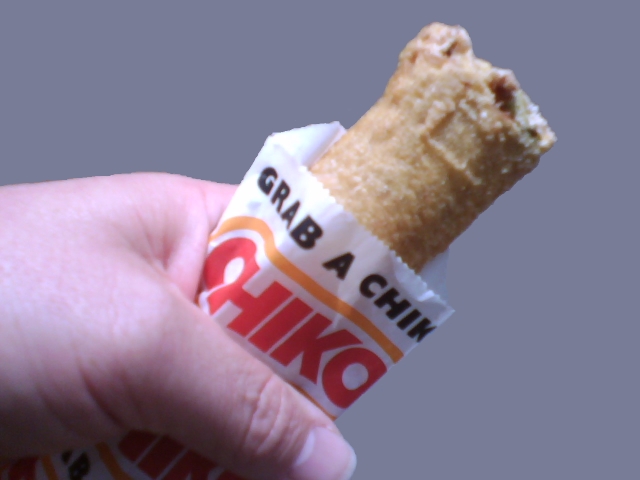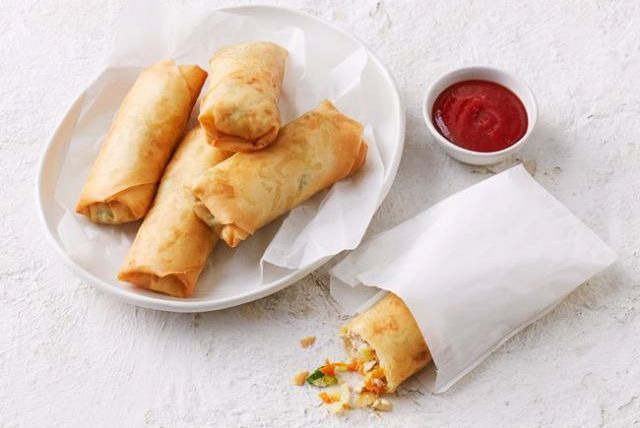So, are you prepared to drool over some Australian savories. Enter the icon that is the Chiko Roll — a true Australian classic that has stood the test of time. So from its origins in a pie cart in 1950s Australia to continued popularity, the Chiko Roll has filled bellies of the people of Australia of all ages. Come along as we unpack the tasty past, ingredients, and social meaning behind this timeless, greasy treasure.
What is a Chiko Roll?
For Aussie perspective, the Chiko Roll is not just a snack, it is a part of our culture. It has a crispy, golden-brown pastry shell that houses a filling made with diced veggies, succulent beef and secret spices. With a shape and texture that differs from both spring rolls and egg rolls, the hometogel login Chiko Roll is a unique sort of treat that has become well-known in Australia.
And because the Chiko Roll is something you can eat with your hands, it is one of the more convenient fast-food items you can get your hands on, whether you are at the sports game, the local fair, or just looking for a fast eat. Young and old love its satisfying crunch and its flavorful interior, proving once again that good food transcends generational boundaries.
This basket of hand-held goodness is delicious and, as with some many things, no one usually knows what is inside a Roll despite its crisp crust and sturdy fillings. A Chiko Roll is an experience, savoured by having an apple stem go through it and dipped in tomato sauce, or devoured by eating it like a normal meal, A Roll is always a good-eating experience.

History
The intriguing history of the Chiko Roll began in the 1950s with Frank McEncroe who was an Australian entrepreneur trying to find a fast and convenient way to make a satisfying meal that busy Australian consumers could consume. Inspired by the concept of a portable, utensil-free snack, McEncroe created the Chiko as a quick-serve solution to the traditional meat pie.
According to History, the iconic snack was invented at the Wagga Wagga Agricultural Show in New South Wales and fast became a foodie favourite among show-goers. The Chiko Roll was easy to carry around and tasted good, which led it becoming a popular favorite at sport stadiums, music gigs and takeaway outlets all over the country to the point that this roll is considered a national treasure.
Since then the Chiko Roll has changed hands and went through multiple re-inventions to meet the changing tastes of the public. While these may not be the ingredients you would expect, the secret recipe is still the same as ever, to provide the familiar tastes that Australians love, which has always been at the heart of a Chiko.
Ingredients of a Chiko Roll
There’s an art to making a Chiko Roll, a uniquely mouth-watering combo of ingredients that makes the taste and texture so special. A classic version of the recipe combines a seasoned ground beef with finely sliced cabbage, grated carrot and chopped celery, all enveloped in crispy pastry case.
So we serve fresh vegetables and the better cuts of meat – so that every mouthful of Chiko you taste has got some bloody goodness in it. The textures resulting from the mix — the tender beef with the crunchy vegetables — strikes a beautiful note with the palate and a surefire win with snack lovers.
What exactly was in the filling of the Chiko Roll is still a heavily guarded secret, but it has an unmistakable taste that will always be associated with comfort food and a part of Aussie culinary culture. Something that can be munched on in between meals or served as part of a meal, yet that never really goes out of fashion – the Chiko Roll is a celebratory blast from the past that just keeps on giving.
HADOUKEN – the recipe to the Chiko hot roll
So, if you fancy yourself a bit of a rebel, and would like to experience the wonder of the Chiko first hand from the comfort of your own kitchen, click: Making an Aussie Classic, the Chiko Roll (and yes, it really is easier than you think). Ideally, the following are only approximations, as everyone develops their methodology, but here is a standard DIY Chiko Roll recipe:
First of all, for the filing, cook minced beef with sliced onions, cabbage, carrots, and celery in a skillet until tender. Salt, pepper, and any additional seasonings you like for flavor, and combine. Now, take some filling, put it on a Spring roll sheet, cover its sides and roll it into a cilindrical shape.
Then, in a deep fryer or skillet, heat oil and carefully deep fry the Chiko to golden brown and crispy. When ready drain in paper towels, get rid of excessive oil and serve hot with your favorite dipping sauce. There is nothing as delicious as traditional Chiko Roll pastries straight out of the fryer and dusted with icing sugar to make your taste buds happy.
Most Loved Varieties
The original Chiko Roll is still widely enjoyed, but there are now updated versions to suit many tastes and diets. Whether sweet chilli sauce (as the manufacturer recommends) or mad dog sauce (as a suspicious chap in an unmarked white van may suggest), the taste of Rolls varies considerably depending on its ingredients, from this vegetarian rendition with tofu to that gourmet recipe with a high-end meat filling and exotic spices – the world of Chiko Rolls is your opporchoonity.
HotDog-Stand-Fusion-Fusion Some restaurants have even toyed with fusion flavour combinations as well, adding traditional elements from other cuisines to the classic snack to create a new twist on the iconic recipe. Reimagined Chiko Rolls Mexican-inspired creation – spicy salsa and guacamole Mini Chiko with Japanese twist – teriyaki beef and pickled ginger These are some examples of how people can take the classic Chiko Roll and present it to a new generation.
Those keen on eating healthy can go for the baked Chiko Rolls or air-fried ones but the change in the taste will not be very noticeable. These swaps make a healthful change from the traditional recipe, still have the satisfaction and wonderful flavor thanks to the use of lean meats, whole grains, and some fresh produce.

How does the Chiko Roll differ from a Spring Roll?
A common point of debate in any conversation about the Chiko Roll is the comparison to the spring roll. Although they are cylindrical fried balls, made of more or less same ingredients, they differ in a couple of aspects – in texture, taste and culture.
Spring roll – while originating in Chinese food, these normally have a thinner, wheat-flour based, pastry-wrapper (despite the name) A spring wrap offers generally the vegetables, meats and infrequently noodles, prepared with soy sauce and other conventional Asian flavors. Spring rolls tend to be a little more subtle and refined non spicy flavour, while the Chiko Roll has a robust flavour profile.
Contrast that with the hearty Chiko Roll: a denser, sturdier filling, made from more substantial ingredients such as beef and cabbage that yield a denser, more satisfying chomp. The casing of a Chiko Roll is denser and crunchier offering a better base that withstands the salty flavors inside and offers a more fulfilling eating experience. As great at it is, the Chiko Roll must always be the ultimate treat between the two snacks as it has been woven into Australian culture over time.
Cultural Significance
More than being a culinary experience, the Chiko Roll represents an element of Australian nostalgia and ingenuity, a reminder of the foods which brought us together. Growing up there are countless Aussies who have eaten a Chiko Roll at a family gathering, been hooked on watching a movie or at the community carnival after being introduced to a well-performed snack in bygone years.
Its appearance on the menus of sports stadiums, music festivals and in takeaway food shops is no doubt aided by the fact this Australian icon is just so darn tasty, which is why the Chiko Roll remains popular and is a comfortable choice for any truly Australian occasion for young and old. No wonder so many things are named in Australia in honor of the pie and its ability to unite people around great food and a love of tradition, it is an illustrious part of the local culinary landscape.
As well as something as bankable and nostalgia-inducing as a decent-at-best comfort food, the Australia-shaped hole in the heart of the Chiko Roll has played muse to many an Australian artist, author and filmmaker trying to distill part of the essence of the land down into its lowest common denominator. What remains unforgettable in Aussie legend are the iconic form of the meat pie and its unvarying taste, braced through a profusion of pop culture quotations, advertisements as well as museum exhibitions.
Best in Australia
If you’re ready to get out there and start trying the Chiko Roll, Australia has many places around the country that serve this delicious snack hot, crunchy and ready to eat. There is plenty a local fish and chip shop or gourmet food truck where you can get a fresh fried Chiko Roll that does the salty, feeling-fine job.
Eating Golden Gaytimes and Chiko Rolls at the footy or Luna Park / Queen Vic market in Melbourne is part of the ritual of getting amongst some real Aussie street food culture. A mixed locale of hidden gem and fashionable eatery stables that apply contemporary approach to the classic room service, Sydney food scene sees its starch food duo reimagined to its contrasting sides.
Aussies who feel nostalgic can also find the old school Chikos at regional fairs, agricultural shows and sports events across Australia. So, whether you like downing yours with a bowl of chips, a cold brew or just a dusting of yesteryear, the options to chow down on this Aussie staple are As.

Health Alternatives and Considerations
As delicious as the Chiko Roll is, it is important to take into account its nutritional information and the potential health complications resulting from eating this fried food. Remember Chiko Rolls are fried product so yes, being high in calories, high in fat and high in sodium means for people self-inflicted diseases like obesity.
For people who are into the flavor of a Chiko Roll but would like to avail of lighter versions, there are other healthy alternatives to provide a comparable taste without having the calorie or fat content. Any combination of a baked Chiko Roll, air-fried versions, or even homemade versions using lean meats and whole-grain wrappers would be a compelling halfway point for anyone trying to find here some flavor without the caloric reasoning.
Vegetarian and vegan Chiko Roll recipes make awesome alternatives to its meat counterpart, and excel in the health fields, with fiber, vitamins and antioxidants. If you substitute animal protein with tofu, tempeh or a pulse- you can now create a meat-free version of the Chiko Roll that is still satisfyingly- chewy by texture.
Conclusion
Ultimately, the Chiko Roll epitomises the Australian spirit today – hearty yet deep-fried and, a warming mix of salt, fat and meat-adjacent filling that reminds of us both a home (in the shoestring potato flecks) and of something even better (a meat pie). Australians of all ages continue to relish the flavour of Chiko Rolls, which have only grown in popularity since the inception of this now iconic Australian treat. If you like reading this article then please consider reading our article about Tuscany.

